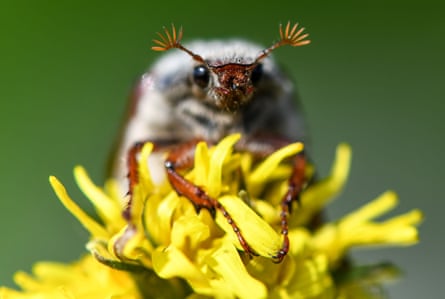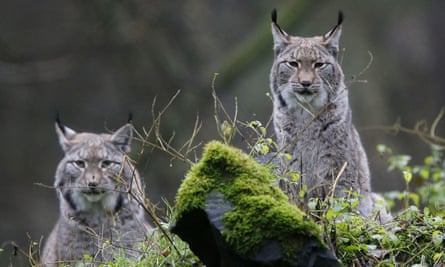Money made available for wildlife conservation by the EU is based on a popularity contest, with vertebrates getting nearly 500 times more funding for each species than invertebrates, according to a new report.
Brown bears, wolves, bitterns and Eurasian lynxes are the Hollywood stars of European conservation and receive almost the same amount as all invertebrates put together, according to analysis of funding under the EU’s Habitats Directive. This leaves little for less charismatic creatures such as spiders and crustaceans, many of which are crucial to ecosystem health and at greater risk of extinction, the study found.
The paper, published in Proceedings of the Royal Society B, is the latest to show that invertebrates are being overlooked by conservation efforts, which usually focus on more eye-catching birds and mammals.
A team led by Stefano Mammola, a cave ecologist at the Italian National Research Council, analysed the EU’s Life programme – which funds climate and environment action– between 1992 and 2018 to see how money was allocated. The study found that 23% of Europe’s vertebrates received funding compared with 0.06% of invertebrates. In total, vertebrates attracted €970m (£880m), six times more than the €150m for invertebrates.
“The data was amazing in terms of how much bears, wolves, and a few birds got in terms of funding,” said Mammola. “The bias operates at different levels within mammals – you have a few species that get everything. There is only one spider included in the Habitats Directive, a few crustaceans, and not a single parasite.”

The risk of extinction did not seem to influence how much money a species received. The brown bear and grey wolf received the most money: €47m and €33m. Both animals are “of least concern”, according to the International Union for Conservation of Nature (IUCN).
The rate of extinction in insects is eight times faster than that of birds, mammals and reptiles, according to analysis published last year, with known declines likely to be the “tip of the iceberg”.
The findings are released as the EU creates its biodiversity strategy for the next decade, with the aim of protecting 30% of land for nature by 2030, with an estimated budget of €20bn. The paper outlines a strategy for fair spending in the coming decade, and a recent EU proposal suggests it will try to account more for invertebrates in the Life programme.
“We should have reached a point, in my opinion, where we do not have to explain why protecting biodiversity is important,” said Mammola. “I see the point of attracting people using charismatic species, I’m not denying that, but I think there are also lots of charismatic species in the invertebrate world. We need to change the perception of what’s charismatic and illustrate the larger diversity of what’s there.”
Most species are declining, but investment in species-level conservation can reverse these trends. One of the biggest conservation successes has been the return of large carnivores such as wolverine and lynx across Europe. Sometimes, protecting “umbrella species” such as beavers or wolves benefits habitats more broadly, but this is not always the case.

“The problem is that invertebrates have very different ecological needs to mammals – but the spatial niche of a spider or a beetle is totally different. You need to protect microhabitats and other elements that you don’t get when you’re protecting a wolf, for example,” he said.
Putting more emphasis on protecting specific habitats such as decaying wood or aquatic systems could protect many rare invertebrates simultaneously.
Extinction risk was assessed using the IUCN database, and public interest in a species was measured by scanning Google searches between January 2010 and December 2019. The top 30 invertebrates supported by Life funds were beetles, butterflies and dragonflies (large and colourful species seemed to do the best), but their funding was “minuscule” compared with funds for vertebrates, researchers wrote.
Using Life project funding as a proxy for assessing spending on the conservation of different organisms is not straightforward because there are other mechanisms for nature conservation across the EU, said Prof Steve Ormerod, an ecologist at Cardiff University, who was not involved in the study.
“A key finding, nevertheless, is that spending through this scheme has been biased towards ‘charismatic’ vertebrates (often mammals and birds) rather than invertebrates. While this strategy will have inevitably also benefited smaller organisms that live under the ‘umbrella’ of bird, mammal or fish habitats, there is clearly a case to ramp up protection and support for smaller organisms,” he said.
Providing an unbiased European conservation agenda was an important aim, agreed Prof Michael Samways, an entomologist from Stellenbosch University, who was not involved in the research.
“As human beings, we naturally gravitate to the feathery and the furry. This paper gets to the heart of this issue – biodiversity is not just vertebrates, it’s about invertebrates, and of course it’s about all the microorganisms as well as the fungi and so on. It’s really about making sure we can save life in its entirety,” he said.
Find more age of extinction coverage here, and follow biodiversity reporters Phoebe Weston and Patrick Greenfield on Twitter for all the latest news and features
